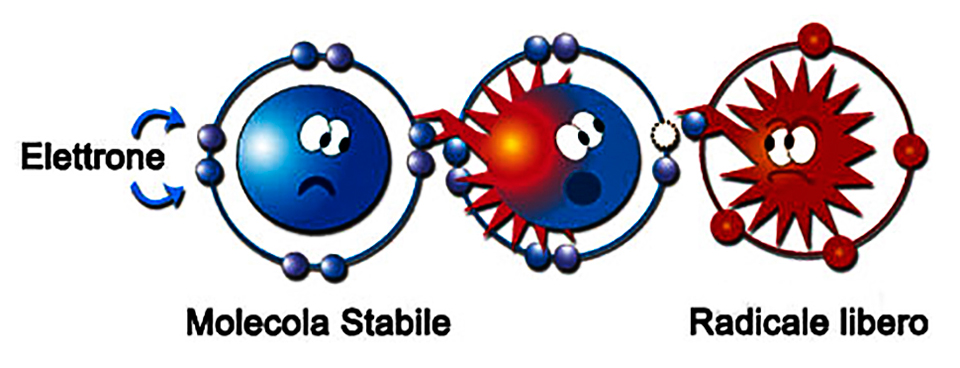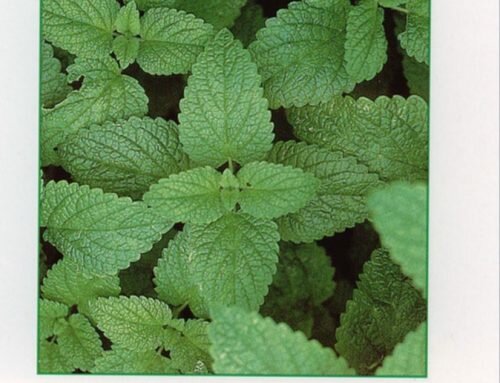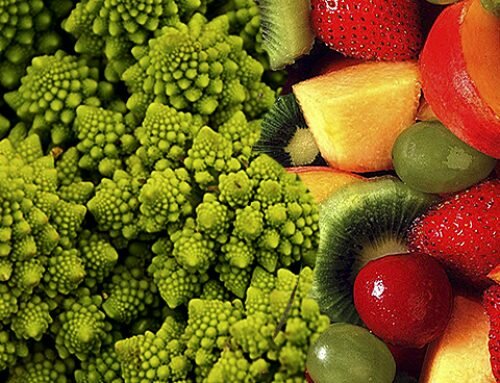Free radicals are created with the presence of oxygen – they are dangerous and highly reactive molecules that damage our cells and our organs.
This type of damage causes the skin and the body to age. Our cells are continuously under attack from free radicals.
People with high levels of cholesterol, diabetes and a “beer belly”are far more likely to be affected to a greater extent by free radical damage than those who are in good overall health.
In diabetes, they increase oxidative damage to the tissues. The accumulation and oxidisation of abdominal fat increase the formation of free radicals. There is a high level of oxidative stress.
Antioxidants are our best form of defence. Our body has defence mechanisms that enable it to combat free radicals. Antioxidants neutralise free radicals therefore preventing the formation of substances that are harmful to our body.
All of the following factors encourage the formation of free radicals: Stress, pollution, alcohol and tobacco consumption, excessive sun exposure, certain medicines, age, an unbalanced diet and excessive exercise.
If these free radicals are in high concentrations and the body has insufficient antioxidants to combat them, we enter a state of oxidative stress.
This is when we are susceptible to illness, ageing of the skin and of the body. If our body has an insufficient supply of antioxidants, it loses its capacity to protect itself.
Where do I get antioxidants from?
Some antioxidants are produced by our body and others come from our diet. Eating plenty of fruit and vegetables that are rich in vitamins, minerals and phytochemical compounds can help to stem the formation of free radicals.
It is important to constantly supply our body with antioxidants, as our cells are continuously under attack from free radicals.
Nowadays, due to our lifestyle and especially after the age of 45, our diet does not provide us with enough antioxidants. This is why it is a good idea to take food supplements.
Diabetes and antioxidants
In diabetes, the formation of free radicals that are a result of lipid peroxidation increases due to an antioxidant deficit.
Diabetic patients have very low levels of vitamin E and extremely high levels of free radicals.
This has been ascertained by conducting a study on diabetic patients in comparison with healthy individuals. Diabetic patients have been found to have very low antioxidant activity.
Where can I find these antioxidants?
It is now possible to buy many different products containing a blend of antioxidants – in capsule or juice form. If we take a blend of antioxidants, we will always achieve better results than if we take each antioxidant separately.
We will list a few antioxidants below:
Carotenoids: beta-carotene, lycopene, alpha-carotene, lutein, canthaxanthin and astaxanthin.
Carotenes can be found in carrots, tomatoes, red fruits and vegetables, fungi, algae and dark vegetables such as broccoli or spinach.
Vitamin C or ascorbic acid
Vitamin C is a powerful antioxidant – perhaps the best known. Vitamic C boosts our defences and intervenes in the metabolism of lipids, helping to lower cholesterol and triglyceride levels.
Vitamin C regulates blood sugar levels. Vitamin C also works in synergy with “fat burning” compounds, reducing body fat mass.
Vitamin E: tocopherols and tocotrienols
Vitamin E is a fat soluble vitamin. It has a crucial antioxidant function in the cell membranes and bad cholesterol or LDL. A 200mg supplement with a blend of tocotrienols reduces total cholesterol and LDL cholesterol.
When oxidative stress is high, blood sugar levels are unstable. If a patient with diabetes or a person who is under stress takes vitamin E, it will help towards regulating blood sugar levels.
Vitamin E also helps to alleviate period pain, hot flushes and menopausal sweats, has a healing effect, improves blood circulation and helps with fertility issues.
Vitamin E is found in sunflower, corn and soya oils, in hazelnuts, sunflower seeds, whole grains and wheat germ.
It is important to know that there are eight different chemical forms of vitamin E. They all work in synergy, forming a part of the body’s natural antioxidant defence system.
Others
Green tea, acai, noni, grape seeds, reservatrol, lipoic acid or selenium.
By adding an antioxidant supplement to our diet, we can “trap” free radicals, which will benefit our skin and our defences.
It will also have an indirect effect on our cholesterol and blood sugar levels, and delay the ageing process.





